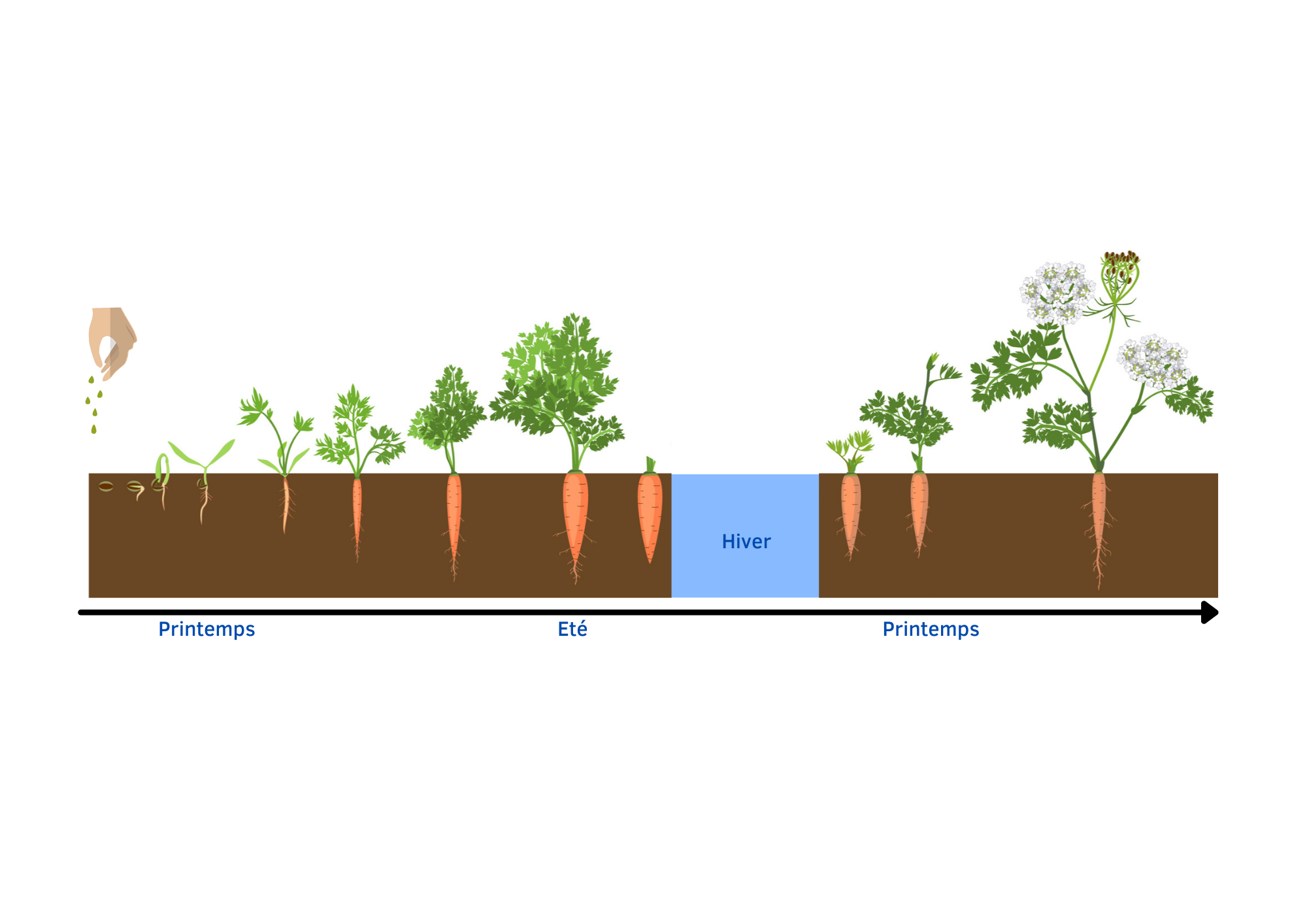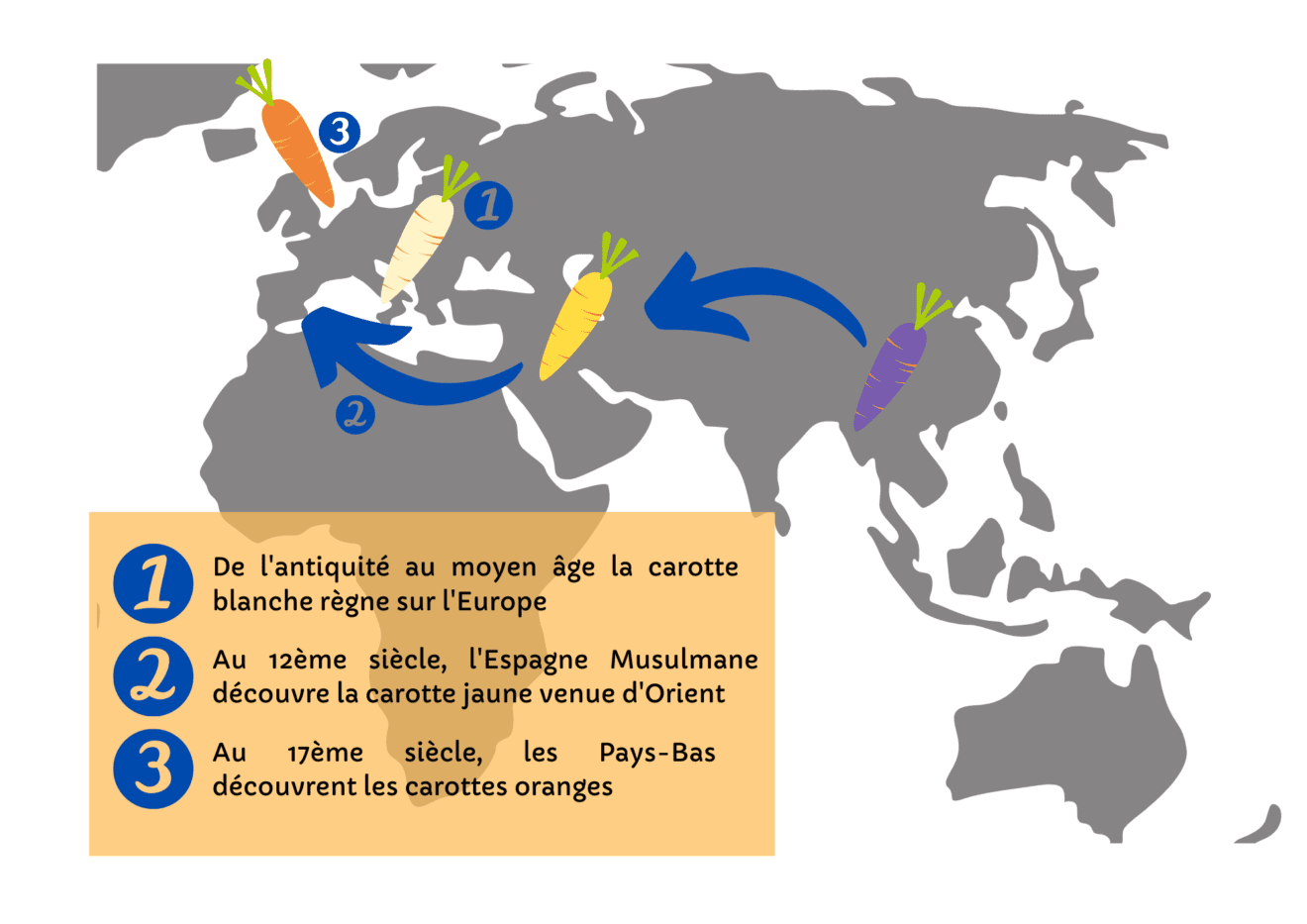Like all the vegetables on our plates, the carrot has evolved from the wild carrot to our modern-day carrots. Here we explain the origins of the carrot and its evolution over the centuries.
Botany :
A member of the Umbelliferae family (which produces umbrella-shaped flowers), the carrot is a biennial plant. It takes 2 years to produce a flower.

Carrot life cycle
- In the first year, carrots build up energy reserves in their roots.
- After winter, the carrot uses its energy reserves to set seed.
- Carrots are mainly pollinated by hoverflies, known as « false wasps ». Each plant can produce more than 1,000 seeds!
The carrot seede has a special feature: it has hooks which, like a « scratch », cling to animal hairs. This enables the seeds to travel great distances.
This mechanism of seed dissemination is called zoochory

There are no seeds in carrots, but carrots do produce flowers, which give seeds.
The origin of the carrot:
In nature, there are 2 strains of wild carrot. White carrots originate in Europe, while purple carrots come from Asia. White carrots have been cultivated in Europe since ancient Rome.

The story of the orange carrot:
In the 17th century, during the Renaissance, Dutch farmers observed a mutation in a field of yellow carrots (a variety probably originating in Syria). This was the discovery of the first orange carrots. Sweeter and more orange, a symbol of royalty in the Netherlands, the orange carrot quickly became popular throughout Europe. Over time, white carrots almost disappeared due to a lack of people to eat and grow them. Today, there are over 500 varieties of carrot! Orange carrots are generally the sweetest, yellow the longest-lasting, white the most fragrant and violet the crunchiest.

Click on the image to discover our urban vegetable gardens in Geneva

